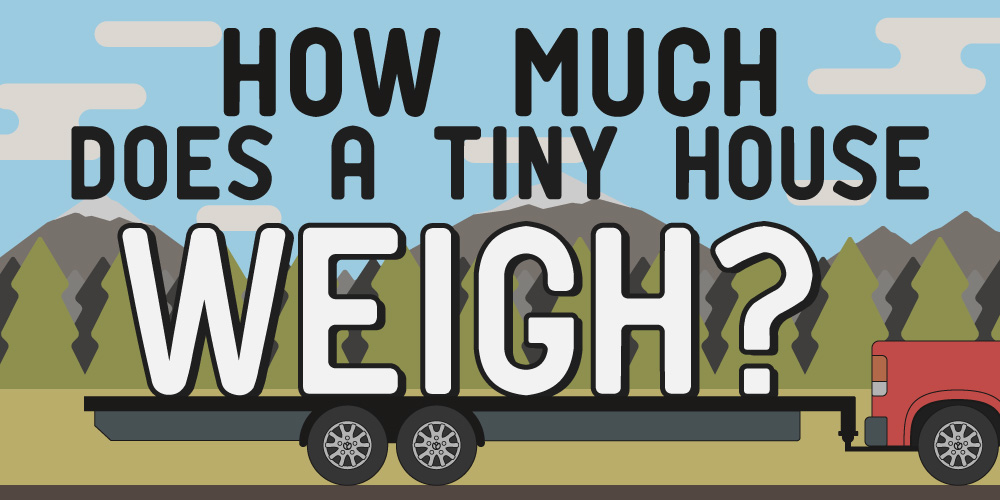
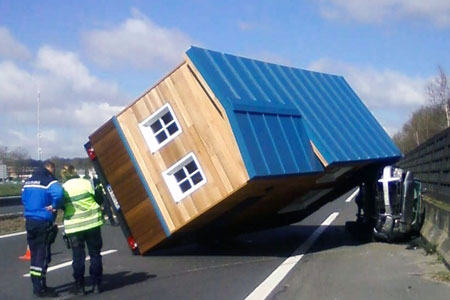 Understanding how much a tiny house weighs is a critical step that, if done wrong, can easily lead to disaster, sometimes with deadly results.You don’t want to end up in a situation like with this tiny house where a lot of people were hurt.
Understanding how much a tiny house weighs is a critical step that, if done wrong, can easily lead to disaster, sometimes with deadly results.You don’t want to end up in a situation like with this tiny house where a lot of people were hurt.
The weight of tiny houses is a very important thing to get right. You don’t want to exceed weight limits of your trailer or tow vehicle, and you need to understand weight distribution to ensure you can tow it safely.
How Much Does A Tiny House Weigh? 8,500 lbs., On Average

A tiny house’s weight really depends on the size of the house itself. The size of a tiny house has a large impact on the weight, obviously.
Below is the average weight for tiny houses of various sizes.
Various Tiny House Weight Measurements

There are a few numbers you’re going to want to consider when crunching the numbers on your tiny house. These are important to understand for different things like trailer load capacity, towing, and safety.
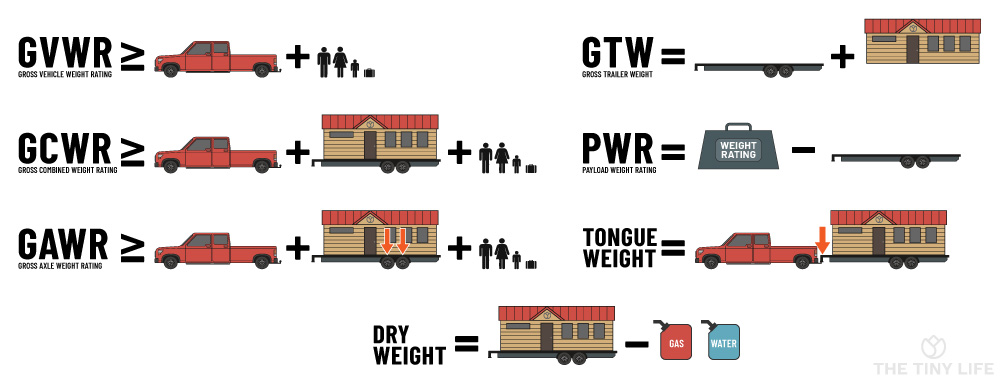
Tiny House Dry Weight
The dry weight of a tiny house is how much the house and trailer weighs without any people, water or moveable furniture. This is useful for transporting because you shouldn’t have people or loose furniture in the house while towing. Include built-in furniture and storage into the dry weight.
Gross Vehicle Weight Rating – GVWR
The GVWR is the total weight that the trailer can safely hold. Not to be confused GCWR with includes the weight of the trailer, the weight of the house, and the weight of everything you might put inside.
Gross Combined Weight Rating – GCWR
This is the weight of the tow vehicle, the trailers, the tiny house and the people/contents all combined. This is important because the Department of Transportation has certain rules about the maximum weights of GCWR for operating on roads and highways.
Gross Axle Weight Rating – GAWR
The major factor of a trailer’s capacity is the axles it is built upon. GAWR is what your individual axles are rated at by the manufacturer. Keep in mind this is per axle, so if you have two, three, or four axles, you multiply the rating of one axle by the number of axles to determine the approximate trailer capacity.
I want to caution you that if you upgrade your axles to a higher spec, it won’t mean towing more weight is safe. This is a very common line of thought with DIY tiny house builders and can be dangerous because your trailer frame also needs to be upgraded to handle the additional weight.
Gross Trailer Weight – GTW
This is simply the weight of the materials that the trailer is built from.
Payload Weight Rating
This is what your tiny house trailer can carry after you take into consideration the weight of the trailer itself. So if you have a trailer with a GVWR of 8,000 lbs., but the trailer itself weighs 2,000 lbs., your payload weight cannot exceed 6,000 lbs.
Tongue Weight
Since a trailer is balanced (unevenly, by design) to transfer some of the weight onto the tow vehicle itself, you want to make sure you’re not putting too much weight on the tongue.
In some cases, if you have too much weight on the tongue, but are still under the weight rating of the trailer and tow vehicle, it might just be a matter of shifting the weight distribution around. You should make sure you design your house with the proper weight balance in mind.
How To Calculate The Weight Of A Tiny House


A tiny house’s weight is made up of the trailer that the house sits on, the materials you build your house with, and the contents of your tiny home.
Tiny House Trailer Weights


The trailer itself needs to be calculated in when considering the weight of your tiny home. Trailer weights can be found on the manufacturer’s website or spec sheet. This is one of the main reasons that I like buying tiny house trailers new, because then you know exactly what you’re getting.
Here are some typical trailer weights:
| Trailer Length | Trailer Weight |
|---|---|
| 16 ft. | 2,300 lbs. |
| 18 ft. | 2,500 lbs. |
| 20 ft. | 2,700 lbs. |
| 22 ft. | 3,000 lbs. |
| 24 ft. | 3,300 lbs. |
| 26 ft. | 3,500 lbs. |
| 28 ft. | 3,700 lbs. |
| Trailer Length | Trailer Weight |
|---|---|
| 30 ft. | 3,900 lbs. |
| 32 ft. | 4,100 lbs. |
| 34 ft. | 4,400 lbs. |
| 36 ft. | 4,700 lbs. |
| 38 ft. | 5,000 lbs. |
| 40 ft. | 5,300 lbs. |
| 42 ft. | 5,700 lbs. |
The upper limit of your tiny house weight is determined by your trailer’s weight rating, but just because you trailer is rated for a certain weight doesn’t mean you can or should go all the way up to that limit.
Weight Of Tiny House Building Materials


It can be complicated to figure out exactly how much a tiny house will weigh when you’re designing your tiny home. Here are the weights of some common building materials (listed in lbs.):
Framing Lumber and Sheathing:
2×4 @ 16” o.c = 1.1 plf
2×6 @ 16” o.c. = 1.7 plf
2×8 @ 16” o.c. = 2.2 plf
2×10 @ 16” o.c. = 2.9 plf
2×12 @ 16” o.c. = 3.5 plf
5/8″ plywood = 1.8 psf
3/4″ plywood = 2.3 psf
1 1/8″ plywood = 3.4 psf
Siding:
Wood board = 1.5psf
Board & Batten = 2.9 psf
Vinyl Siding = 0.52 psf
Counter tops:
Granite = 20 psf
Marble = 19 psf
Laminate = 4 psf
Butcher block = 7 psf
Flooring:
2″ (nom.) decking = 4.3 psf
1″ (nom.) hardwood floor = 4.0 psf
Linoleum = 1.5 psf
3/4″ ceramic tile or quarry tile = 10.0 psf
Roofing:
20 gage metal deck roofing = 2.5 psf
18 gage metal deck roofing = 3 psf
0.05” thick polyvinyl chloride polymer membrane = 0.35 psf
Insulation:
1” fiberglass batt insulation = 0.04 psf
1” loose fiberglass insulation = 0.14 psf
1” rigid insulation = 1.5 psf
Blowing wool insulation R-38 (16” deep) = 0.62 psf
1″ Glass wool = 0.3 psf
Windows:
Skylight: metal frame w/ 3/8” wire glass = 8 psf
Windows: glass, frame and sash = 8 psf
Other Materials:
3/4″ gypcrete = 6.5 psf
1/2″ gypsum board = 2.2 psf
5/8″ gypsum board = 2.8 psf
Plaster (1″ thick) = 8.0 psf
Acoustical tile = 1.0 psf
1″ Cement plaster = 12.0 psf
1″ Rigid fiberglass = 1.5 psf
plf = per linear foot • psf = per square foot
Weight Of Tiny House Contents


The final piece that will make up your tiny house weight is the things that go inside your tiny house, including furniture, clothing, and even water. People often forget to consider this, but it can really add up.
Weight Of Furniture
Furniture is something that can add a lot of poundage to your tiny home. Consider too that you might decide to change your furniture in the future, so give yourself some breathing room in case any new furniture is heavier.
For example, when I first built my house, I started with a single sectional piece that was about 75 lbs., but later upgraded to a much nicer recliner that was around 230 lbs. So make sure you have some wiggle room built into your calculations
| Item | Weight (lbs) |
|---|---|
| Flat Screen TV (small) | 35 |
| Flat Screen TV (medium) | 56 |
| Flat Screen TV (large) | 140 |
| Entertainment Center (small) | 210 |
| Entertainment Center (large) | 420 |
| TV Stand | 175 |
| Three seat sofa | 287 |
| Four seat sofa | 350 |
| Sectional sofa (4-piece) | 1050 |
| Sectional sofa (5-piece) | 1295 |
| Loveseat | 224 |
| Armchair | 105 |
| Recliner | 105 |
| Rocker | 84 |
| Item | Weight (lbs) |
|---|---|
| Futon | 210 |
| Coffee table (small) | 70 |
| Coffee table (large) | 105 |
| End table | 105 |
| Ottoman | 35 |
| Cabinet (small) | 70 |
| Cabinet (medium) | 140 |
| Cabinet (large) | 245 |
| Cabinet (curio) | 70 |
| Glass cabinet | 140 |
| Desk (small) | 154 |
| Desk (large) | 245 |
| Bookcase (per section) | 140 |
| Bookshelf (small) | 70 |
| Item | Weight (lbs) |
|---|---|
| Stereo | 28 |
| Speakers (standard) | 35 |
| Speakers (large) | 70 |
| Blinds/Shades | 21 |
| Curtains/Rods | 28 |
| Area rug (small) | 35 |
| Area rug (large) | 70 |
| Clock | 35 |
| Grandfather clock | 140 |
| Floor lamp | 21 |
| Table lamp | 14 |
| Mirror (small) | 21 |
| Mirror (large) | 49 |
| Window A/C unit | 40 |
Weight Of Clothes:
You might be a tiny houser that loves shoes or has a large wardrobe, so you’ll want to account for that weight too. I personally keep a very simple wardrobe, which really consists of a uniform.
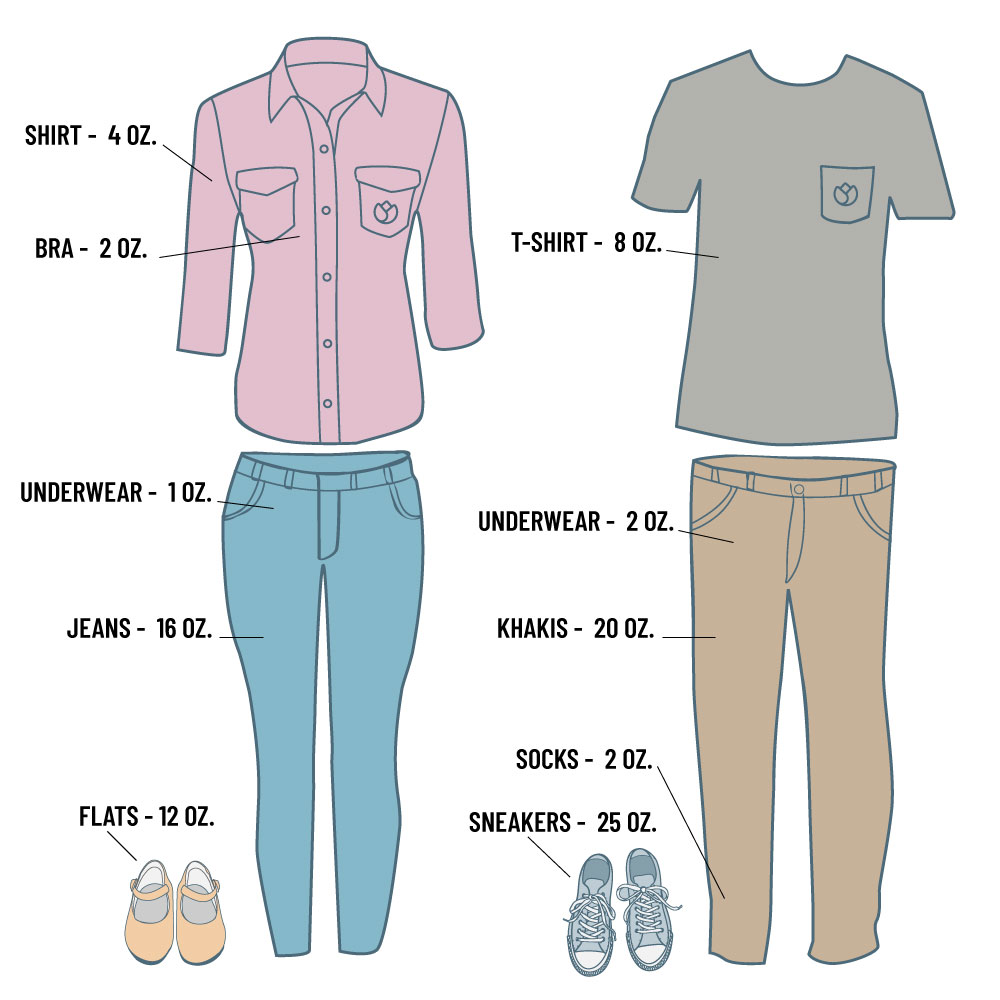

Weight Of Water Tanks And Hot Water Heaters
Water is heavy, 8.33 lbs. per gallon to be exact, which can add up when you really think about how much water you use in a day. Many people want to have a water storage tank so they can go off the grid. Others are trying to decide which water heater is right for them. For either of these options, weight can be a big deciding factor.
- Water in pipes: 2.7 lbs. per foot of water line
- Water in tanks: 8.33 lbs. times the volume of your tank
- Water in tanked hot water heater: 8.33 lbs. times the volume of your hot water tank
- Water in tankless hot water heater: 5 lbs.
Tiny House Weight Examples


To put these weights into perspective, here are some popular tiny houses that you might have seen around and their weights.
You’ll see that some of these houses are heavier even though they are on shorter trailers than others. Wall height, cladding materials, windows and other features all impact the weight of a tiny home.
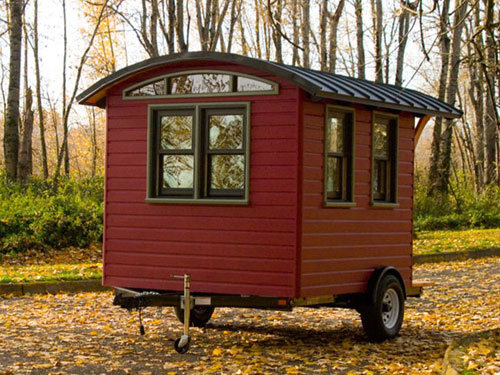

10-Foot Tiny House – 3,200 lbs.
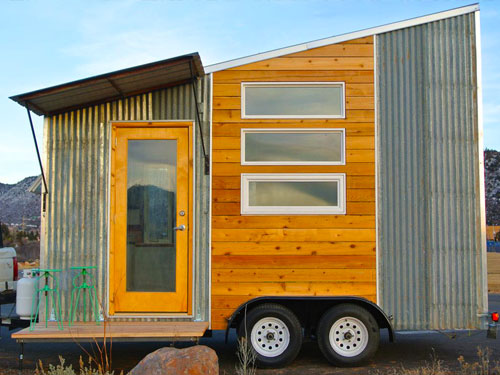

16-Foot Tiny House – 5,400 lbs.
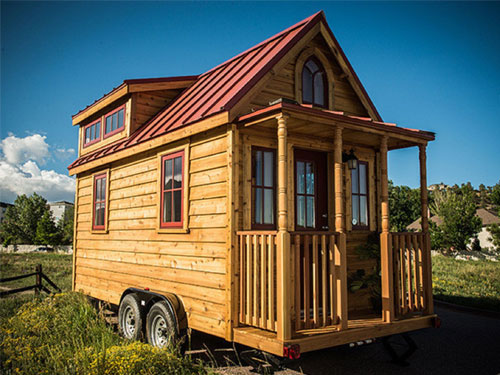

18-Foot Tiny House – 8,000 lbs.
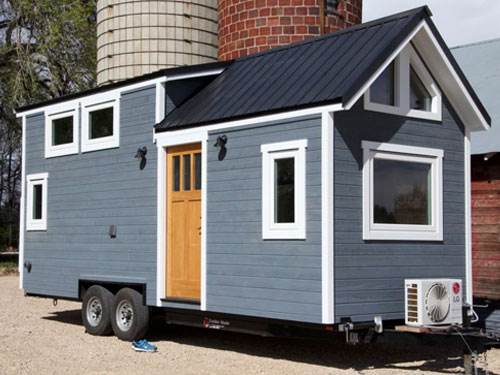

20-Foot Tiny House – 8,800 lbs.
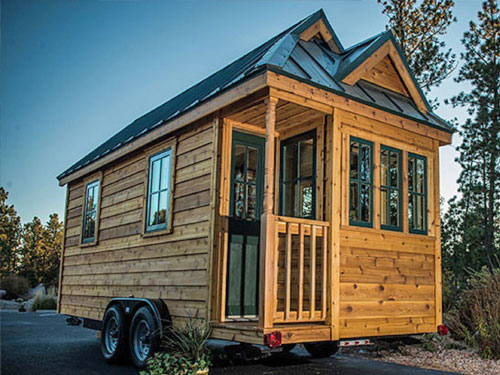

24-Foot Tiny House – 10,500 lbs.
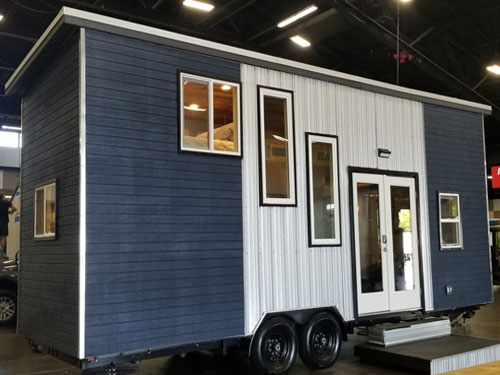

20-Foot Tiny House – 9,800 lbs.
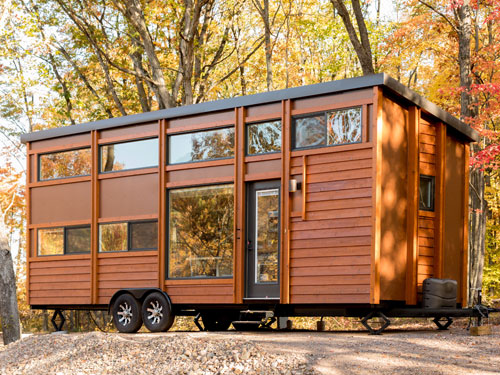

35-Foot Tiny House – 13,500 lbs.
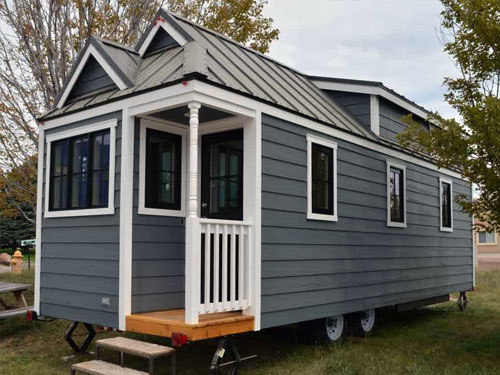

26-Foot Tiny House – 11,500 lbs.
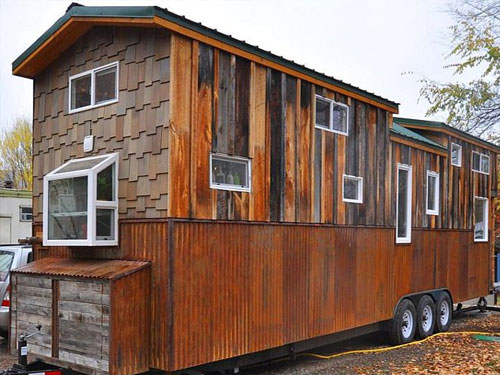

34-Foot Tiny House – 14,000 lbs.
Tiny House Trailer Weight Distribution


The weight of your tiny house is only part of the picture — how you distribute that weight is also a really big deal.Balancing your weight side to side and front to back is critical. Having the right amount of weight on the tongue is important too, as too much or too little can be dangerous.
Here is a great video demonstrating this:
This is a place where you’re going to want to loop in a professional engineer to calculate the load balances for you. You yourself are taking on the liability and responsibility of building a tiny house, (you get the idea, I’m not responsible) so do your homework.
Typically, you’re shooting to have the tongue weight be 10-15% of your tiny house’s Gross Trailer Weight. No more, no less. You’ll commonly see people suggest that you want 60% towards the front of the trailer, and while this is a good rule of thumb, sometimes having 60% of the weight forward will result in a tongue weight higher than the 10-15%, which is dangerous.
Your Turn!
- What trailer weight rating are you shooting for?


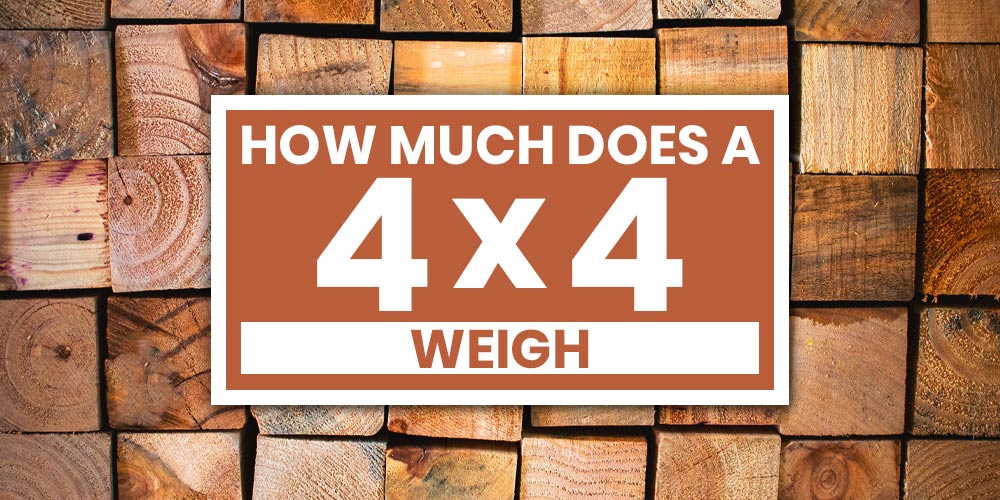
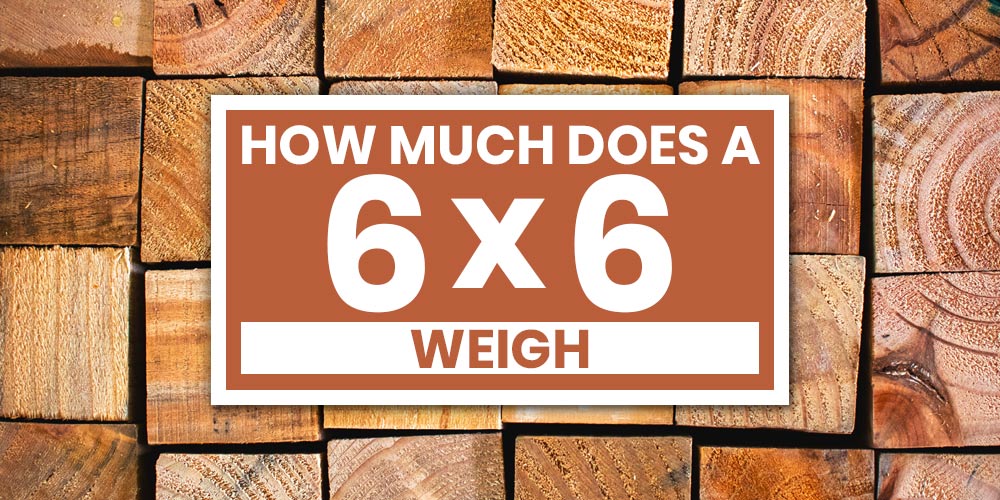

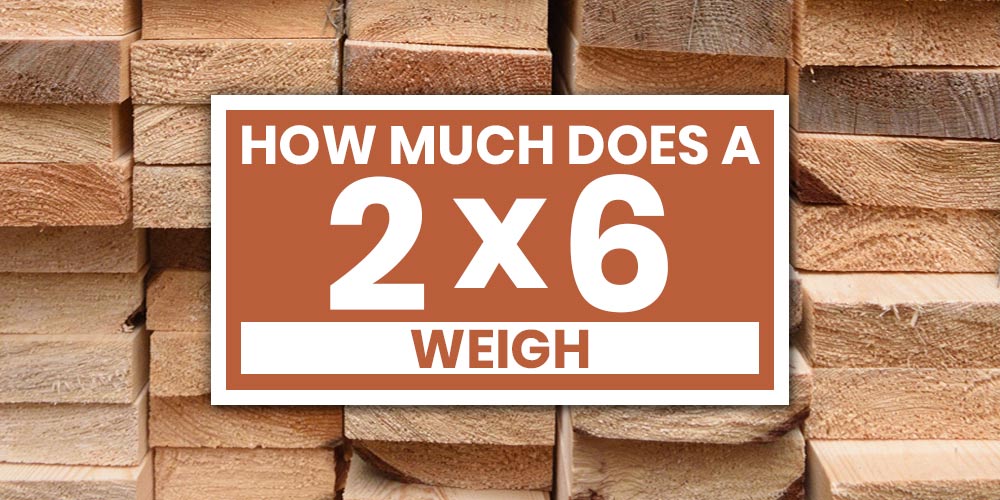
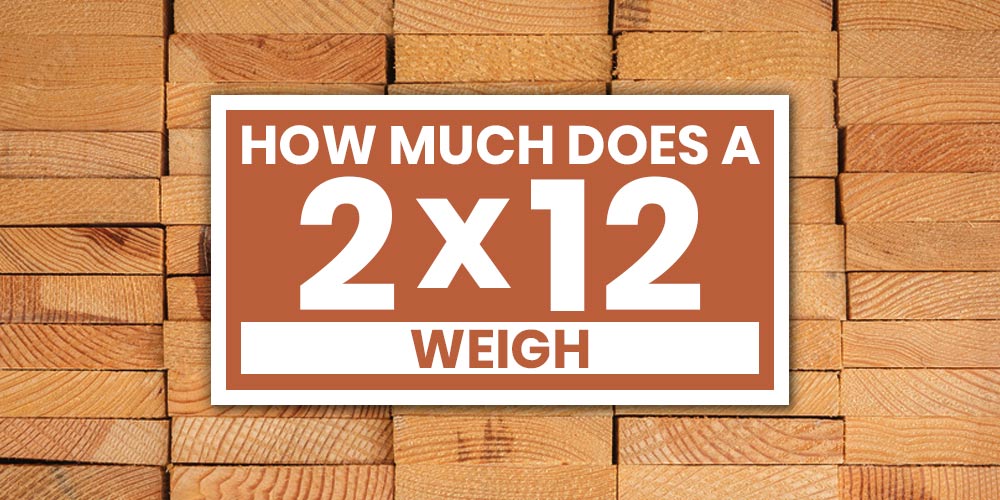

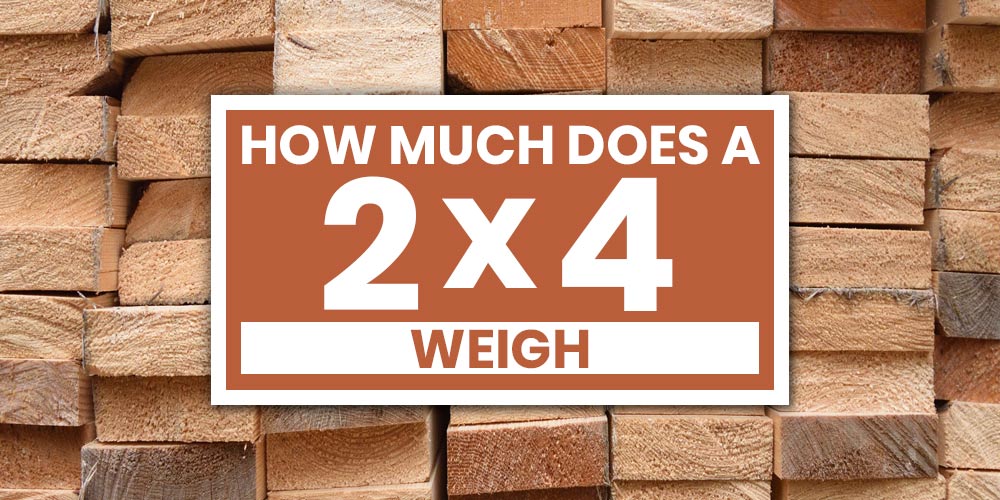
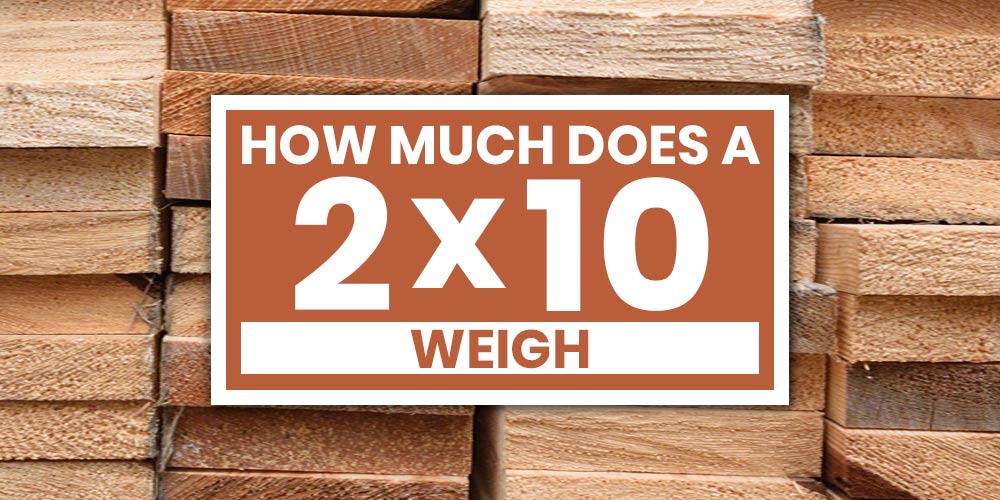
Bravo! This is a fantastic article and should be part of a test that any tiny house builder (including DIY) should take before hitting the road. Our ThinHaus models are actually very close to these numbers. The trailers and frame (steel) are a little lighter, but the sheathing and insulation make up for this. Word or advice: Always go with a bigger truck than you think and keep your speed down. Better to get there a little later than not at all.
Great article but only relates to the USA. It would have been good to give a disclosure to this effect at the start of the article. Also weights are only given in outdated avoirdupois not metric.
Tiny House Northeast here! This page of information is excellent. Thank you! We deeply appreciate these insightful tools and knowledge we can pass onto DIYers and those who purchase trailers. It’s obvious that you did a lot of research and we commend you on your hard efforts. May 2022 be one heck of a great year for all of us invested in portable tiny buildings! ~ Isa, PM
Great article, comprehensive and in one place too. Thanks for sharing!
Do you have many plans for a gooseneck trailer tiny houses?